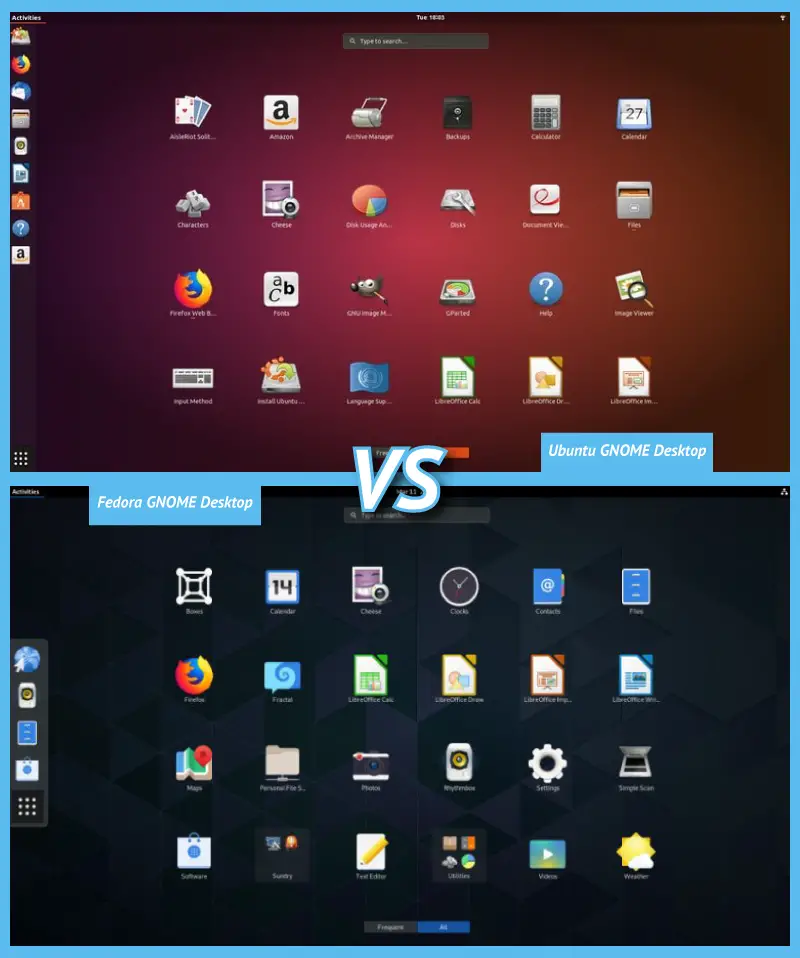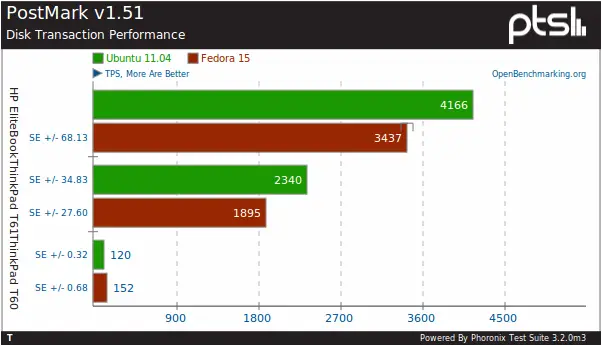Fedora vs. Ubuntu: The Ultimate Desktop Experience

Executive Summary
Fedora and Ubuntu, two prominent figures in the Linux landscape, cater to distinct audiences. While Fedora centers on bleeding-edge innovation, Ubuntu prioritizes stability and user-friendliness. Understanding their differences is crucial for selecting the optimal desktop experience.
Introduction
In the realm of Linux distributions, Fedora and Ubuntu reign supreme, appealing to a vast spectrum of users. Fedora, spearheaded by Red Hat, embodies the cutting-edge, perpetually pushing the boundaries. On the other hand, Ubuntu, courtesy of Canonical, champions stability and accessibility, making it a favorite among novice Linux enthusiasts. This comprehensive treatise delves into the intricacies of both distributions, comparing their strengths and weaknesses to aid in selecting the most suitable choice.
1. Target Audience

- Fedora: A haven for bleeding-edge enthusiasts and developers, Fedora offers the latest software and technologies. Expect frequent updates with cutting-edge features that may appeal to those seeking the most advanced Linux experience.
- Ubuntu: Designed for ease of use and stability, Ubuntu caters to a broader audience, including first-time Linux users. Its long-term support releases ensure a stable base for daily computing, prioritizing reliability over bleeding-edge updates.
2. Software Ecosystem

- Fedora: Adopters of Fedora gain access to an extensive array of open-source software, thanks to its vast repository of packages. With Fedocalc, Fedora facilitates seamless installation of Flatpak applications, expanding the software ecosystem further.
- Ubuntu: Ubuntu boasts a vast collection of software packages in its repositories, coupled with the convenience of Snap packages and Canonical’s close collaboration with leading developers. The Ubuntu Software Center provides a user-friendly interface for software management.
3. Installation
- Fedora: The Fedora installation process is straightforward, utilizing a graphical installer that guides users through the necessary steps. However, its more frequent release schedule may require reinstallation more often.
- Ubuntu: Ubuntu’s installation process is renowned for its simplicity, making it an excellent choice for beginners. Its wide hardware compatibility and automated partitioning contribute to its ease of use.
4. Updates
- Fedora: Fedora follows a rolling release model, perpetually updating its software components. This ensures access to the latest software and security enhancements but can occasionally introduce some instability.
- Ubuntu: Ubuntu employs a Long Term Support (LTS) release cycle, offering extended support for its operating system. While major updates arrive less frequently, LTS releases prioritize stability and reliability.
5. Community
- Fedora: Fedora’s community is vibrant and engaged, actively contributing to the distribution’s development and support. The Fedora Project collaborates with Red Hat to ensure a strong and responsive community.
- Ubuntu: Ubuntu’s community is vast and highly supportive, providing documentation, forums, and a welcoming atmosphere for newcomers. Its commitment to user experience shines through in its extensive online and local support resources.
Conclusion
Ultimately, the choice between Fedora and Ubuntu hinges on individual preferences and requirements. Fedora, with its bleeding-edge focus and advanced features, caters to experienced Linux users and developers seeking the latest innovations. Ubuntu, on the other hand, prioritizes stability and accessibility, making it an ideal platform for beginners and those seeking a reliable and user-friendly desktop experience. Both distributions offer robust software ecosystems, user-centric communities, and reliable updates, empowering users to select the distribution that aligns seamlessly with their needs.
Keyword Phrase Tags:
- Fedora vs. Ubuntu
- Linux desktop experience
- Bleeding-edge vs. stable
- Software ecosystem
- Community support

I’ve been an Ubuntu User for years now, and I finding it hard to switch to Fedora. In my everyday usage, I’ve encountered several annoying visual glitches that make me want to go back to Ubuntu ASAP. How do you Fedora loyalists deal with that?
As a long-time Fedora user, I can honestly say that I’ve experienced the same issues, but the bugs don’t occur often enought to make me wanna switch back to the good ol’boring Ubuntu. Overall, I feel a Fedora is a FAR superior OS than Ubuntu could ever hope to be!
This article fails to mention one of the most important things to consider when comparing Ubuntu and Fedora: Package Management. Ubuntu’s package management system is lightyears ahead of Fedora, and its ease of use, in addition to its apt’s larger package library, just makes Ubuntu the better choice for me.
It’s clear the author of this article is biased towards Fedora. The truth is, Ubuntu is a more friendly option for beginners. As someone who’s tried multiple Linux Distros, I’d recommend Ubuntu to anyone, especially for those new to Linux!!
Fedora has been my favorite distro for a while now. Gnome has improved SO MUCH over the years, and each release of Fedora keeps wowing me. With Fedora I can keep my laptop powered by a bleeding edge kernel while enjoying the stability Gnome provides. I can’t recommend Fedora enought!!!
Ubuntu and Fedora’s package managers can both be improved significantly. In reality, the best package manager out there is Gentoo’s Portage. I’d urge anyone serious about customization to try Gentoo if they are willing to dedicate the time.
Guys, this comparison is kinda missleading; it’s like comparing Apples and Oranges. Fedora is a much more advanced Distro made for power users, while Ubuntu is better for beginners. It all depends on your preferences/needs. There is no right or wrong choice here. It’s just a matter or personal taste and experience level 😉
Lololol, I can’t believe so many of you are still using these “outdated” OS’s. Everyone knows that ArchLinux is the FAR superior choice. I switched to Arch a few years ago, and have never looked back! Arch is the only true bleeding edge distro that gives you full control over every aspect of your system.
I’M SORRY I CAN’T HEAR YOU OVER THE SOUND OF MY AWESOME ROLLING RELEASES!!! insert troll face here